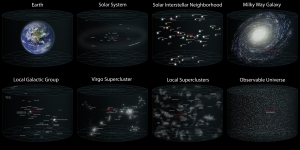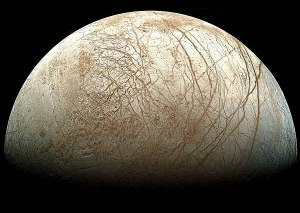The End of an Era
Or, more accurately, the end of a semester. I’ve had a lot of fun blogging for this class, and I’ve learned a lot about that vast expanse above our heads known as the cosmos. One of the most important things I’ve learned, I think, is the vastness of space. Even in our solar system, planets and moons can be millions of kilometers apart from one another. These are huge distances, that, with my limited human mind, are extremely difficult to grasp. But, I always have to keep in mind that the astronomical objects I talk about so off-handedly are separated by ridiculous amounts of space. Another thing that has left a deep impression on me is the amount of stuff that is out there. Now when I look up into the night sky, I see not only the stars, but I imagine the galaxies whirling around, just as our own galaxy is whirling about, just as the planets in our solar system orbit about the Sun, and just as Earth rotates about its axis. All this intricate motion and universal complexity fascinates me, and I find it a transcendental experience.
Universal Scale (courtesy Wikipedia)
I am also really interested in the search for extraterrestrial life, because our universe seems so empty, but can it really be so? Naturally, then, I was really intrigued by the Drake equation that we learned about in class.
Original Drake Equation (courtesy SETI League)
I had a great time hypothesizing about the number of planets that can support life, what percentage of that life will become intelligent, and so forth. In the future, I’ll definitely be most interested in what new developments in the search for interstellar life come up, especially since the discovery of extremophiles on Earth means that life on other planets is now a real possibility. On a related note, I’m really looking forward to the upcoming mission to (ok, flyby of ) Europa maybe starting around 2021. Europa’s subsurface ocean is really cool (especially since it’s formed by tidal heating from Jupiter) and since water is fundamental to life on Earth, who knows, maybe we’ll someday find life on that moon too.
Europa (courtesy NASA)
The more we discover about our universe, the more surprised we are. For example, I found this article about “stellar extremophiles“, or stars that form in places where we thought they shouldn’t, for example, in places where we thought gas density would be too low for the gas to collapse and begin nuclear fusion (a.k.a. star birth). Researchers using NASA’s GALEX (Galaxy Evolution Explorer) space telescope have found stars forming outside the gassy disks of spiral galaxies, and various other places. Here’s a video talking about the discovery. It’s cool that this could be telling us that there could be ways to make stars in extreme environments, just as life seems to find a way to survive on Earth, no matter the conditions. In the future, I’ll be looking out for news talking about the exploration of the extremes of the cosmos, because that’s just the kind of thing that ignites my imagination most when I think of that inky black space above our heads.


